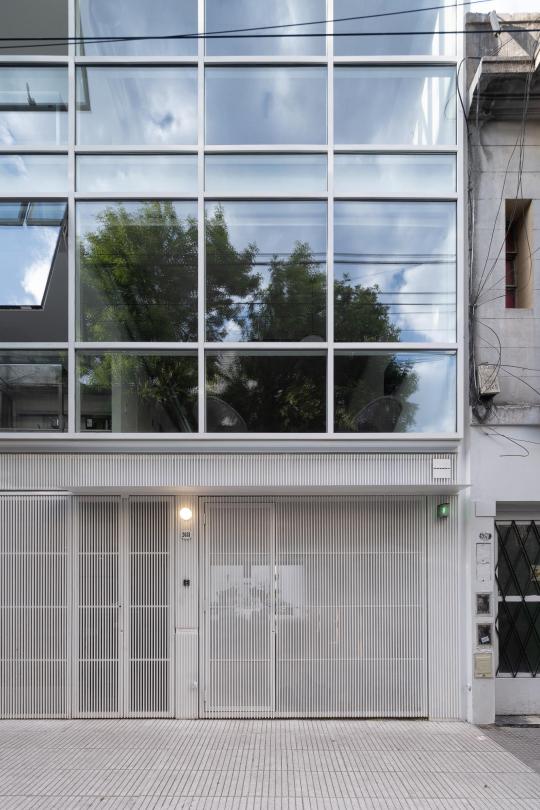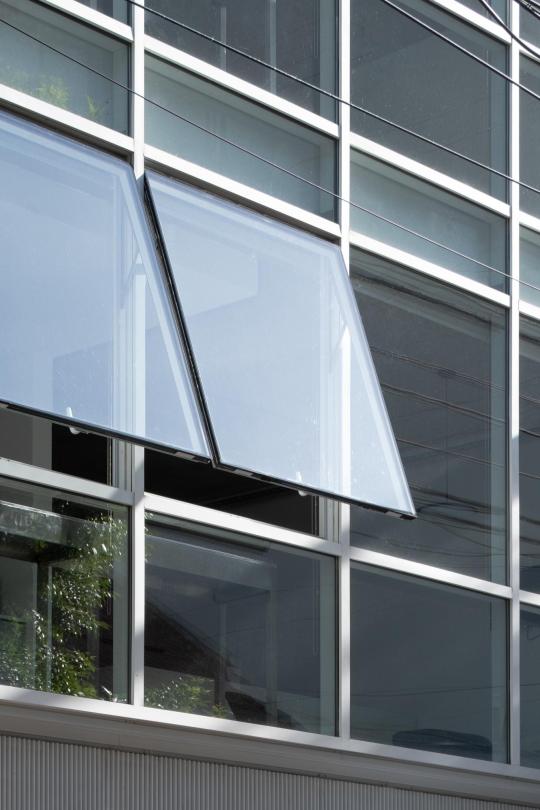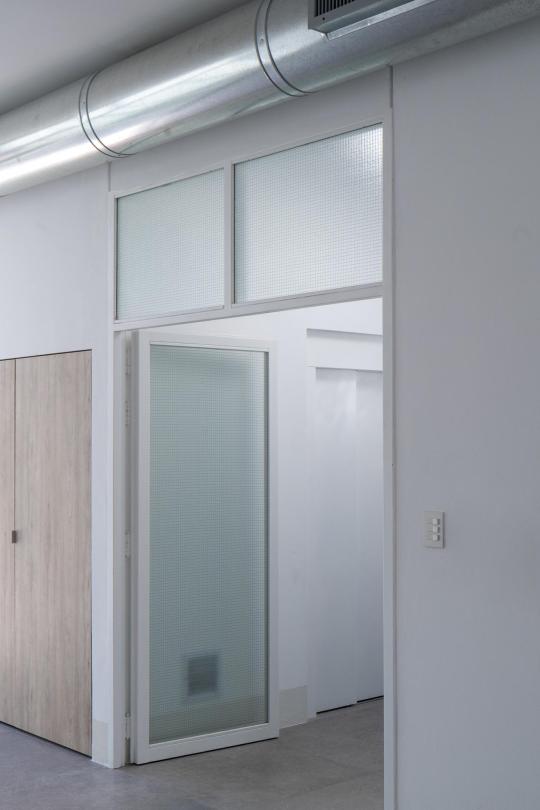#Buse variable
Text

Meules sur parcelle de la ferme du Breuil, aux Galannières (Corbon) – gouache format A3, 8 juillet 2022
VISIBLE dans l’exposition VILLE, MER, CAMPAGNE, jusqu’au 18 novembre, galerie Arts Factory, 27, rue de Charonne, 75011 Paris, tous les jours sauf le dimanche de 12h30 à 19h30.
#2022#meules#les galannieres#le breuil#corbon#orne#perche#normandie#horizon#arbres#rapace#buse variable#gouache#paysage#paysage gouache#paysage gouache a3#champ#campagne#vol#oiseau#agriculture
28 notes
·
View notes
Photo

39 notes
·
View notes
Photo







Je passe mes vacances de Toussaint à Marseille.
Au Musée d’Histoire de Marseille, il y a une expo disséminée un peu partout : “Objets d’une Rencontre” :
- Corentin Tavernier -marqueterie, “ Combat d'une Buse variable et d'un Héron cendré”
- Nadège Frouin Brackez - fauteuil, “Souvenir de l'Argentière”
- les 2 suivantes : Corentin Tavernier et Julien Le Goff - "Reliquaire”, où l’on retrouve un plan de Marseille.
- Marie Fournier, Jérémy Gaudibert, Solange Battara - "La Manufacture des Marie-Salope”
- Damien Debu et Julien Sueur-Zilberberg - banc, “Le Creux de la Vague”
- Florinda Sandri et Danielle Franco - robe en feuilles de bois, “Réminiscence”
#marseille#musée d'histoire#art contemporain#artisanat#corentin tavernier#marqueterie#buse#buse variable#héron#héron cendré#nadège frouin brackez#mobilier#fauteuil#julien le goff#reliquaire#plan#mosaïque#marie fournier#jérémy gaudibert#solange battara#marie-salope#entonnoir#terre cuite#damien debu#julien seur-zilberberg#banc#vague#florinda sandri#danielle franco#mode
8 notes
·
View notes
Text

Buse (1880) | Léo-Paul Robert (1851-1923)
1 note
·
View note
Text
girlies when theyre trying to figure out bus routes

#i wanted to bite my moms head off because i just dont fucking understand the buses and i cannot do it by myself the first time#And i dont even know how to explain it i jsut hujdsatgihdhtq98u3et9w35njt34ojkwemtkwt#id rather piss away all my money w lyft because then i KNOW im getting from point A to point B and not having 9870965875 variables#in between . I JUST DONT KNOW!!!!
5 notes
·
View notes
Note
Thoughts on trolleybuses?
trolleybuses are a very good option for cities that are willing to put in a bit of extra upfront cost in exchange for long term reliability and cost reduction. trolleybuses are much more mechanically simple than other buses as they do not need to carry their own source of power -- internal combustion engines or battery technology both add layers of complexity, more components that wear and need maintenance, and contribute to extra costs in maintenance. not to mention, they're old and battle tested -- we know what wears down, we know when it wears down, and the technology has been proven for decades
whether your city should build trolleybuses is a different question. cities with challenging topography (San Francisco and Seattle for example) get a lot of extra benefits owing to their superior performance on steep slopes. they also don't suffer from range anxiety the same way battery-electric buses would in cold climates.
it comes with a tradeoff -- the trolley wires are extra maintenance, and if the bus comes off the wire you gotta spend a bit of time putting them back on. modern trolleybuses often include small battery systems to let them travel some miles without being connected to power, which is pretty huge for flexibility reasons. San Francisco's latest trolley fleet can go for (i believe) around 4 miles before losing power? not to mention newer designs that are essentially battery-trolley hybrids, allowing for trolleybuses to venture much farther out from main corridors that have the trolley poles.
cities looking to build bus rapid transit systems especially should consider them -- if you're going through the effort to build dedicated travel lanes for your buses, putting trolley wires above them is not much of an extra cost and can help electrify your system without the unknown variables that come with fledgling battery-electric bus technology.
in short: trolleybuses good, more cities should consider using them, and by no means should any city be ripping out trolley wires.
~ Freyja

23 notes
·
View notes
Text
Famous Last Words
CisFem Reader x Trafalgar Law
CW: Violence, swearing, mature themes, erotic romance, angst, creative use of devil fruits, this story is still in progress, I will add content warnings as needed.
Summary: You're the only person who knows the face of an infamous murderer. The Marines have put you in witness protection while they track down the criminal, and you now exist as Arcadia Helen Mercia - a humble accountant with no ties to the North Blue.
** PLEASE NOTE ** - The reader has a Cover Name, and that is used at the beginning of the story, but you are still (Y/N), and you'll see (F/N) (L/N) and (Y/N) used later in the story. THIS IS NOT AN OC STORY - I needed a "false" name for the fact that you've been given a protective identity.
This is a Band AU & Soul Mate AU - some variables in the story were decided by poll votes on tumblr xD so buckle up.

Chapter 1: Fake Your Death
Your life had been turned upside down when you were simply in the wrong place at the wrong time. Well, as far as the Marines were concerned, you were in the right place at the right time, because you were a key witness to a murder.
You had been lamenting the latest failed relationship of your short life, and had gone on a walk. In your depression you walked an incredible distance from your home, and it took hours for you to get back. By the time you had even gotten anywhere near home the sun had set.
You hadn’t considered a taxi because you didn’t really have any money on you in the first place. The buses were an option, but again, money, and more than that, you didn’t like buses. You were rarely a fan of people as a general rule, and people on buses could be… unique.
When you heard odd sounds coming from an alley you had every intention of not paying attention, but your senses were on edge the minute the sun had set. You heard everything. You heard names that were carved into your heart from the fear that accompanied them. You knew someone was going to be killed for their mistakes, and you were acutely aware that there wasn’t anything you could do to stop it.
After the sharp sounds of silenced shots sliced through the air you had stepped back against the build and tucked yourself into the darkest shadow you could find. It seemed to take the killer forever to come out of the alley, and it was everything you had to keep yourself silent. You willed your breath into nothing, and stilled your heart with a strength you didn’t know you had.
Desperation saved you. Fear froze you - searing every terrible detail into your mind, never to be forgotten.
You didn’t move until you were certain he was gone. You barely allowed yourself to breathe until you were fully convinced that there was no other living thing in the entire city but you. You wanted to bolt to your apartment, but something compelled you to stand at the edge of the alley, and call the Marines.
Minutes later there were a dozen lights, and twice as many people. A tall man with white hair and a gruff disposition had made contact with you first, before handing you off to a subordinate. Officer Tashigi was nice, and calm. She let you cry, and stare off into nothing for as long as you needed, never once rushing you as you gave your statement.
You spent the night at the station, and most of the day asleep in Officer Smoker’s office. Too tired to even try to get home, especially after a long night of paperwork and questions. You still didn’t have money on you, and that’s how you ended up sleeping on the small sofa in his office. Well, that and you were adamantly against leaving Smoker’s side for a few hours.
The marine seemed to understand what you were going through and provided you with a pillow and a blanket, and then woke you up with a cup of bad coffee and a donut.
Your lack of funds, and your trauma response, saved your life.
When Smoker drove you home, you noticed the window was broken in your apartment. He accompanied you inside and found your place had been tossed. Beyond tossed, it was like someone tried to just demolish the entire space. Black ink was smeared everywhere, and in a few places there was a symbol that meant nothing to you, but everything to Smoker.
He pulled you out of the apartment and drove you somewhere safe right then and there. You spent time moving from safe house to safe house; you traveled by boat, carriage, car and cart. You even got to ride on a dirigible, and you couldn’t imagine the cost of that trip. Your identity was changed, so was your appearance – at least superficially.
Hair was dyed, and you had to deal with contacts for a while to have different colored eyes. You had shoes with lifts inside of them, to make you taller, and your clothes were shifted out for a completely different style. It rankled you a bit, but those changes only persisted for a few months as you were bounced around.
Smoker realized that you were the only person that had seen the serial killer’s face, and lived to tell the tale. They needed you alive, and even more than that Smoker promised you would be safe. Keeping you safe meant making you disappear into the sea of people that existed while they tracked down the man you had seen.
Weeks turned to months, months turned into two years.
You had calmed down after the first year. You trusted your instincts, and you no longer nearly leapt out of your skin at every snap or scuffle. You had a job, and your own place. You knew you could be moved away in a blink, but you were settling into a comfortable routine. You’d even made friends with some of the people at work.
You were allowed to live, you just had to be careful. No reacting to your old name. No talking about your hometown. No mentions of anything about your old life. You had to exist as Arcadia Helena Mercia. You almost grumbled you hadn’t even gotten to pick the name, but technically, you hadn’t picked your birthname either.
The only thing making it all easier was that you hadn’t left anyone behind. Your parents had passed away when you were in college, and it was why you hadn’t completed your degree. Arcadia had, however, she had an Associates in mathematics – and sometimes you felt a little sour that one aptitude test by the Marines was enough to effectively earn you a degree.
But (Y/N) didn’t have a degree. It was just another layer to keep you awash in a sea of people. Officially, (Y/N) died in a tragic boating accident, her poor corpse lost at the bottom of the North Blue never to be recovered.
Arcadia existed – born and raised no less – in the West Blue. Went to a school on an academic island, and then attended college in the Grand Line. Afterward she found a job in the East Blue, and that’s where you were now. Three places you only knew briefly as you’d been moved around, and half of what you knew of them had to be provided to you in files.
The irony being that Arcadia was a damn sight better at having a life than (Y/N) had been. Your better job had removed a lot of stress from your life, and the lack of stress made it easier to interact with your coworkers. You made friends, and because you were keeping a low profile you weren’t trying to find any romantic partners anyway. Everything was almost relaxing.
Part of you wasn’t exactly thrilled about the idea of going back to your old life, but you couldn’t worry about tomorrow. It could take the Marines years to find the killer, and as long as you kept up your end of the bargain, you wouldn’t get jerked around all the seas. There was some irony to it all.
“Oi, Dia, are you even listening?” A demanding, but concerned, woman’s voice snapped you out of your waltz down memory lane and you turned toward the source.
“Sorry, Nami, I spaced out. What did you say?” You smile turning toward the orange-haired coworker of yours. Nami was in sales. You, little mathematician that you were, were in accounting. It wasn’t a terribly glorious job, but it was a job that kept your human interactions limited, and kept your refrigerator full of food.
“I got tickets to Your Synthetic Enchantment.” She explains, pulling a few tickets from her pocket. “Vivi, Zoro, Sanji, Luffy and I were going to go. I remember you enjoying their music, you want the last ticket?”
You did, but crowds weren’t really your vibe. “Yes… and no.” You admit with a sheepish smile.
“Look, with Zoro there I promise no one will bother us. He’s got like an aura of intimidation.” She says it with a teasing smile, but you also know she’s not wrong. Zoro scared you the first time you met him, but he’s a solid guy. In more ways than one – he was at least 80% muscle by volume.
“Is it going to be televised?” You question. You’d confided in Nami a little bit about yourself. You had played it off as a seriously persistent stalker ex, and Nami, Vivi and Robin had turned into protective sisters. They even did shopping for you from time to time so you didn’t develop any routines. You cried when they made the offer – it was nice to have people willing to go out on a limb for you, but also some of your tears were guilt.
You wished you could be completely honest, but it would be as bad for them as it would for you.
Shortly after that, Nami introduced you to Sanji, Zoro, Luffy and Franky. She called them the Line Backers. Luffy decided you were friend-shaped almost immediately, and Sanji seemed to be enamored with everyone he ever met. Zoro nearly made you wilt, but once you realized he just had a semi-permanent scowl as his default expression, it was easier to talk to him. Franky was the coolest of the bunch.
He had an old punk kind of vibe and towered over everyone. Franky owned a motorcycle shop, and did a lot of custom work and repairs, but the shop itself was like a fortress. Apparently, he’d outfitted it to be a kind of bunker, for no other reason than sheer boredom.
Nami shakes her head. “I checked three times to be sure.” She assures you. “None of the World Heart Infection tour dates are going to be televised. It’s supposed to be more intimate for the fans I guess?”
“World Heart Infection? Are they hoping to meet their soul mates or something?” You nearly snort.
Nami shrugs. “Maybe? Can you blame them?”
You smile and sigh. “Ah, how could I forget, the lovely Miss Nami has found her soulmate, after all.”
Nami beams. “I’m telling you. You just know.”
“So I’ve heard.” Your smile doesn’t falter. “But the statistics.”
Nami rolls her eyes. “You’re such a math nerd, I swear.”
You laugh. “That’s fair. But, no, I would love to go. I haven’t been to a concert in ages, and I do really like their music. It’d be a treat to see them live.” You admit, taking the offered ticket. “Are we meeting somewhere and going as a group?”
“Of course!” She replies. “I’m not going to drag you to a crowded place without making sure you’re properly protected. We’re meeting up at Franky’s shop a couple hours before the start of it. Sanji’s going to feed everyone, and then we’ll pile into a couple cars and head to the venue.”
“Nami.”
“Yes?”
“Nami, these are backstage passes!” You hiss the words, trying not to shout in surprise.
Nami’s usual cat-like smile turns even more cat-like than you’d ever seen it before. “Luffy’s friends with the lead singer.” She nearly squeals the words, keeping her voice as low as possible. Your eyes go wide.
“Are you kidding me?” You ask and Nami shakes her head.
She leans in closer after looking around. “His sister is Uta, remember?” She explains. “He traveled with her a few times during her earlier tours and knows a ton of big artists because of it. I guess someone was harassing the band and Luffy just laid them out – well, Luffy and Uta’s manager Shanks. I swear those two should’ve gotten into boxing or something, they would’ve made bank.”
“Wow.” You say it legitimately. “Luffy’s full of surprises.”
Nami smiles and nods. “Okay, it’s three weeks from now, let me know if something comes up.” She taps the ticket. “Vivi and I were going to get outfits for the concert next weekend, you want to come with us?”
You nod, not wanting to decline. The best person to go clothes shopping with was Nami – it was uncanny the deals she ended up getting. “That sounds good. I don’t know that I have anything to wear as it is.”
“Hey, are you okay?” Nami questions, putting a hand on your shoulder.
You give her a proper smile. “Yeah, it’s just… two years ago today.”
“Ah. Oh sweetie, I’m sorry.” She leans forward giving you a hug and patting your hair. “We can go out tonight and grab some drinks. I can text Vivi and Robin, I’m sure one of the line-backers will be available too.”
You laugh a little despite it all. “That’s not a bad idea. Ah, but F-Franky or Zoro. I don’t know that I have the energy for Sanji tonight.”
Nami pats the top of your head before stepping back. “If I have to resort to Sanji, I’ll keep him on his best behavior.”
#Famous Last Words#Trafalgar Law x reader#x reader#reader insert#trafalgar d water law#band AU#Soul Mate AU
53 notes
·
View notes
Text






Moreno 2681 by palca estudio
The project is located in Balvanera, a central neighbourhood of Buenos Aires that presents a heterogeneous built profile with a strong commercial presence and an identity characterised by cultural diversity. This pattern is further consolidated when understanding its direct link with the building of the Argentine National Congress, with the large number of hotels distributed throughout the area or with the Miserere Square, that acts as a hub for trains, buses and subways. Balvanera could be interpreted as a neighbourhood of national identity.
Architecture as identity. The assignment originates from the clients' need to have administrative offices in new building that determines their identity as an institution. These offices had to be complemented by apartments to be used by people travelling from the provinces of Argentina to Buenos Aires for a certain period of time. Among the clients' initial demands was the use of a glass façade as an image towards the city, which for us was an essential part of the initial program.
The potential of mixed uses. The initial idea was to locate work and domesticity in the same block. This option was rapidly discarded after the first tests when the incompatibility of the circulation dynamics was verified. Taking advantage of the long proportion of the site (7.60 x 47.60 m) it was then decided to divide the uses into two independent blocks: the office one in the front, more exposed to the street and the domestic one in the back, more reserved in the centre of the block. In this way, a daily relationship is generated between all the people who inhabit the building while providing privacy in each of the parts.
Adapt to the given conditions. Both blocks adjust their buildable profile to the limits determined by the internal front line. This imaginary line is determined by the Government of the City of Buenos Aires to delimit a non-buildable area in the centre of the block. Instead of looking for alternatives to deal with this restriction, the project adapts to the resulting silhouette. In this way, two individual blocks are proposed to take advantage of all the possible footprint and are developed with the necessary height to deal with the proposal.
The void as a meeting place. Both building blocks are connected through a central void that works as a meeting point. This void is projected through a garden of organic shapes, white stones and growing vegetation that aims to generate meeting places for the people who work and inhabit the building.
Versatile and timeless from the beginning. The office block is planned on four levels with open spaces that allow to deal with the constant changes in today's work dynamics. Each level has outdoor spaces materialised by balconies on the lower floors and a terrace on the upper floor. The domestic block is also planned on four levels but made up of two stacked duplex apartments. Each one of them operates as an individual unit designed with the minimum elements necessary to be temporarily inhabited.
How to be efficient in the Argentine context. In an economic context as complex and variable as the Argentine one, it is necessary to be rational and efficient in the materialisation of architecture. In that sense, the construction of the building is proposed in a synthetic and traditional way through the implementation of few elements, but optimising their use. To do this, we proposed a reinforced concrete skeleton and lightweight masonry walls, textured white anodised aluminium frames in the windows and airtight double glazing for greater thermal efficiency. In this way, we make it easier to deal with suppliers while achieving efficiency and durability in the use of the elements.
A new way of perceiving the environment. Faced with a complex and heterogeneous urban context, the project is created from synthesis as contrast. Pure lines, geometric composition and white elements characterise a building that aims to communicate order and timelessness.
Design: palca estudio
Location: Balvanera, Buenos Aires, Argentina
Year: 2023
Photography: Javier Agustín Rojas
18 notes
·
View notes
Text
continues to freak me out that we used to take the same buses for years and never once noticed each other...there are some people i'm friends with where it was pretty probable that we'd end up knowing each other due to proximity and shared interests, so the only variable is how exactly we'd meet, but to have the reverse of like. only a huge amount of chance led to us being in the right place and right time to pay attention to each other, let alone become friends
#at the little simz concert she mentioned having to reschedule the show from iirc last year which was another random chance thing#that made me elbow him very hard and he looked over like ??? and i was absolutely not sober enough to explain the incredible coincidences#of it all...truly luck has been a lady
8 notes
·
View notes
Note
it really just seems like tumblr is not an affirming place for you and only makes your mood tank.
I think you would really benefit from a hobby you can do in a physical space with other people. It will do a lot of good for you to get out of the house and be around others rather than stay in a self perpetuating spiral of loneliness at the house. See what sort of events your library hosts etc.
Look into your local community to find others and keep an open mind. Yes its going to be hard and anxiety inducing at first but it gets easier each time you push yourself out of the comfort zone of your home/internet space. Its really hard work but you can do it!
Theres a very limited amount of help complete strangers online can offer, you need to start helping yourself.
Also please don't dismiss this as not offering a solution, because I am an internet stranger taking time out of my day to type this and try to help you. An F/O ask/comment isnt a healthy longterm solution to depression, its a momentary boost in serotonin that is gone almost immediately and only serves to fuel your depression. You have to at a certain point realize that some things you seek only make your issues worse and you need to try other things to help yourself.
I'd love to truly, but the hard part with that is. I don't drive. Like I've wanted to get involved with community stuff, especially theatre, for awhile, but I'm still working on getting my permit and overcoming the STRESS I have around driving. (I can control a car very well, I was almost a natural, but seeing other cards gives me panic attacks that cause me to disassociate).
The bus system here ain't great, shit schedule and buses constantly cancel randomly. Uber is way to expensive for me to regularly take for say. Rehearsals which will probably be almost daily. There isn't even a library on the only accessible bus route (which I have to trek up a hill for and even when I have my cane is difficult) and can I just say that's uh. Infuriating I feel like that should be a thing that is just. Default.
I'm rlly in the situation of suburban life being SO FUCKING UNFRIENDLY if you don't/can't drive. Bc I'd love to get out and do stuff. There's so much stuff I wanna do but I literally can't bc Im at the shitty mercy of so many shitty variables.
And like... Yeah the f/o asks won't cure my depression that's why I'm getting back into therapy. But it would be nice to like. Not have to deal with the 50 hours a week of being home alone + not even having someone to send me just a message online, even a simple one
I'm hoping that now that I have a job again and the hours are pretty good (tho. Opposite of hubby's which is gonna SUCK but not a lot of overnight stuff is hiring rn) I'll be. Better. Its really been the five straight months of being locked in my room that caused. This mess I'm in. I tend to make friends pretty easily at work and from what I've seen of kitchen staff in general working multiple restaurant jobs it's always a fun time w them shskdhd
I do appreciate it I just. God. Trying to find local community when you can't drive and have a shit bus line sucks lol.
2 notes
·
View notes
Note
Probably a very weird question that I've been thinking for a while (feel free to skip it if you want) but what do you think about countries that do not have trains? Are they undeveloped? Are they missing out on greatness?
No problem, that's an interesting question! If you don't mind, I'd be interested whether you have some background; like, are you thinking about a specific country? (If you feel comfortable saying)
I'll answer generically for now: No, I wouldn't say they're undeveloped or anything. They may be missing out, but there may be good reasons for that.
The thing about railroad construction is that it was largely concentrated in one specific range of history. The world's modern railroads were mostly built in places that were rich during all or part of the time from 1850s to 1920s, give or take. That includes both rich countries and to a lesser (and very variable) extent the colonies of rich countries, and in general more the areas that were mostly flat and less the really mountainous parts of the world. This is vastly over-simplified but generally true enough.
Most of the countries that built railroads then still profit from them, but there aren't a lot of examples of new networks or massive extensions to networks since then (the main exception would be China). Many countries that didn't really participate in that boom, and/or went too hard on the retreat of railroads especially in the 1950-1980 period. And the situation in post-colonial states is a whole very fascinating topic on its own—there are a lot of different stories about what railroads they started with, if any, and what happened to those.
But anyway, a country can be highly developed and have no or only very few trains, depending on how history fell. Iceland doesn't have any trains (haven't heard anything about the airport rail link in ages), the gulf states are very light on trains (but increasing), much of South America has only very limited networks, and most of Africa never had good train networks to begin with (with some notable exceptions).
Are countries without trains or with few trains missing out? On an emotional level, I'd say yes, of course, trains are fun. On a practical level, it depends. Trains are excellent at some tasks, but they aren't easy to come by. If you want to transport bulk goods or massive amounts of people, you can't do better than a train. But building a rail line is really expensive, and it may not always be good value for money.
We live in a time where it's generally accepted that every place needs road access, and trains are optional, and I don't think that's necessarily wrong. You need the flexibility of roads for emergency services, oversize loads and much more things that are difficult to find into a rail schedule. And you can build road access much cheaper. Even a cheap rail line is much more useful than a decent road, but also much more expensive than a crappy or average road. So justifying the expense of adding a rail line can be difficult (and actually finding the money is a whole other thing).
There are lots of other factors that make it difficult to say whether a rail line makes sense. For example, our modern economy is physically based around factories put wherever near highways, with lots of trucks running lots of different point-to-point routes, and that's something that trains aren't awesome at. On the other hand, if you have a big mine that is a few hundred kilometres inland, and you want to bring that ore to a port, well, you probably already do have a rail line because it's the only useful way to do that. And then there's the whole thing where passenger rail and freight rail have very different requirements. You can balance them, but it's not always easy, and financial incentives may discourage you from even trying.
At the end of the day, if you have a corridor where you have lots of trucks (especially lots of trucks carrying the same thing), or lots of people in cars or buses going the same route, then a train is always worth a thought, depending on local geography. I'd definitely recommend it.
We're seeing a lot more places create rail lines that didn't have them right now all over the world, and I think that will and has to continue. But trains are not the solution to every problem, only most of them, and there will always be places where other solutions are better.
#no idea whether that made any sense#feel free to ask about specifics for stuff I mentioned here and/or stuff I forgot
45 notes
·
View notes
Text
Santorini in October

Santorini in October, Santorini, often hailed as a paradise on Earth, is a destination that shines all year round. While it's most popular during the summer months, October offers a unique and enchanting experience. In this article, we'll explore why visiting Santorini in October is a brilliant choice for travelers seeking a more relaxed, authentic, and cost-effective Greek island adventure.
Why October is Perfect
Mild Weather: October in Santorini brings relief from the scorching summer heat. With an average temperature ranging from 18°C to 24°C, it's the perfect time to explore the island without sweating.
Fewer Tourists: The summer crowds have departed, and you can relish the beauty of Santorini without jostling through throngs of tourists.
Gorgeous Sunsets: Known for its stunning sunsets, Santorini is even more magical in October as the sky offers a canvas of vibrant hues.
Affordable Accommodation: Prices for hotels and vacation rentals are considerably lower, making it an excellent choice for budget-conscious travelers.
What to Do in Santorini in October
Exploring the Villages
Oia: Walk through the charming streets, enjoy the blue-domed churches, and take in panoramic views of the caldera.
Fira: Visit the capital of Santorini, where you'll find museums, restaurants, and a vibrant atmosphere.
Pyrgos: Explore this historical village, known for its medieval charm and the ruins of a Venetian castle.
Wine Tasting
Wineries: Santorini is famous for its wine. October is an excellent time for wine tasting as the grape harvest season is in full swing.
Beaches
Kamari Beach: Relax on the black sand beach and take in the serene ambiance.
Red Beach: Explore the unique, rust-colored sands and crystal-clear waters.
Hiking Trails
Fira to Oia: Embark on the picturesque hike along the caldera edge for breathtaking views.
Ancient Thera: Hike to the ancient ruins of Thera for a journey through history.
Local Cuisine
Tavernas: Savor traditional Greek dishes in local tavernas. Try moussaka, souvlaki, and fresh seafood.
Seafood: Being an island, Santorini offers the freshest seafood. Don't miss out on the grilled octopus.
Desserts: Indulge in sweet treats like baklava and loukoumades.
Festivals and Events
Feast of Agios Artemios: Experience a slice of local culture by participating in this traditional celebration.
Santorini Arts Factory: Enjoy exhibitions and performances at this cultural center.
Practical Tips
Pack Layers: As the weather can be variable, pack both warm and light clothing.
Book in Advance: While it's less crowded, some attractions and tours may require reservations due to limited availability.
Conclusion
Visiting Santorini in October offers a truly magical experience. With milder weather, fewer crowds, and the island's natural beauty in full bloom, it's the perfect time for a memorable escape. Whether you're a nature enthusiast, a food lover, or a history buff, Santorini in October has something for everyone.
FAQs
Is October a good time to swim in Santorini?
Yes, the sea is still warm in October, making it suitable for swimming.
Are the hiking trails in Santorini well-marked?
Most hiking trails are well-marked, but it's a good idea to carry a map or use a hiking app.
What's the best way to get around Santorini in October?
Renting a car or using local buses are great options for transportation.
Can I see the famous Santorini sunset in October?
Absolutely! The sunsets in October are spectacular and less crowded.
Are there any cultural events in Santorini in October?
Yes, you can attend local festivals and art events for a taste of Santorini's culture.
3 notes
·
View notes
Text
the best part about living here is that the buses are so #random it really adds variability and excitement into my life (<- transfer left as my bus pulled up, next bus full on failed to show up)
5 notes
·
View notes
Text
By: Jason L. Riley
Published: Dec 12, 2023
A decade ago, New York City launched a campaign to combat teen pregnancy. It featured ads on buses and subway cars that read: “If you finish high school, get a job, and get married before having children, you have a 98% chance of not being in poverty.”
That advice, more popularly known as the “success sequence,” is often credited to research done by Brookings Institution scholars Isabel Sawhill and Ron Haskins, though others have made similar observations. In his recent book, “Agency,” Ian Rowe of the American Enterprise Institute writes that the message “has attracted many admirers because of the simplicity of the three steps that young people, even if born into disadvantaged circumstances or raised by a young single parent, can themselves control and take in their lives.”
The effort nevertheless faced significant backlash from detractors who accused then-Mayor Michael Bloomberg of stigmatizing teen pregnancy and pushing a “moralistic, conservative agenda to revitalize marriage,” Mr. Rowe writes. Mr. Bloomberg’s successor, Bill de Blasio, ultimately abandoned the effort. Public moralizing has since fallen further out of favor and been replaced by a kind of self-congratulatory nonjudgmentalism. In today’s New York, you’re likely to see ads for free syringes and directions to “safe” injections sites for junkies, even as drug overdoses have reached record levels.
We could use more of that moralizing from public officials, whether the issue is solo parenting, substance abuse or crime. The success sequence works to keep people not only off the dole but also out of trouble with the law. High-school graduates and children raised by both parents are much less likely to end up in jail. “Virtually every major social pathology,” political scientist Stephen Baskerville writes, “has been linked to fatherless children: violent crime, drug and alcohol abuse, truancy, unwed pregnancy, suicide, and psychological disorders—all correlating more strongly with fatherlessness than with any other single factor, surpassing even race and poverty.”
America’s crime debate tends to focus on so-called root causes, such as joblessness. But it’s worth remembering that the sharpest increase in violent crime began in the 1960s, a decade that saw low unemployment, strong economic growth and a doubling of black household incomes. As notable, labor-force participation rates of young black men fell during the 1980s and ’90s, one of the longest periods of sustained economic growth in U.S. history.
A new academic paper from the Institute for Family Studies doesn’t deny that economic conditions play a role in criminal behavior. And co-authors Rafael Mangual, Brad Wilcox, Joseph Price and Seth Cannon write that “changes in law-enforcement and the prosecution of criminals have also had a hand in the recent uptick in violent crime in American cities.” The paper’s main argument, however, is that family instability may be the biggest factor of all and that it’s not receiving the attention it deserves.
“Cities are safer when two-parent families are dominant and more crime-ridden when family instability is common,” the authors write. Nationwide, the total crime rate is about 48% higher in cities “that have above the median share of single-parent families, compared to cities that have fewer single-parent families.” Even when controlling for variables such as race, income and educational attainment, “the association between family structure and total crime rates, as well as violent crime rates, in cities across the United States remains statistically significant.”
Having a father around, the authors note, is about more than an additional paycheck. Fathers teach their sons responsibility, self-control, how to carry themselves, how to treat women. They tend to be more effective disciplinarians, and their involvement in childrearing is linked to positive outcomes in the academic development of their children, “especially in mathematics and verbal skills.” That finding “has been established for both sons and daughters but, unsurprisingly, it is especially pronounced among boys. The presence of married fathers is also protective against school suspensions and expulsions, as well as the risk of dropping out of high school.”
Between 1960 and 2019, the percentage of babies in the U.S. born to unwed mothers grew from 5% to almost 50%. “Shifts from the late-1960s to the 1990s away from stable families have left some cities, and especially some neighborhoods, vulnerable to higher rates of crime, especially violent crime,” the study concludes. “We need to realign material and cultural incentives in our cities to favor marriage and stable families, not undercut them.”
We all know single mothers—some of us even may be related to them—who heroically beat these odds and raised children that have gone on to lead productive lives. The public-policy goal should be to reduce the number of people who will have to face those odds. And that means calling out behavior that is objectively harmful to people and society in general.
--
Study: Stronger Families, Safer Streets: Exploring Links Between Family Structure and Crime
Executive Summary
This Institute for Family Studies report finds that strong families are associated with less crime in cities across the United States, as well in neighborhoods across Chicago. Specifically, our analyses indicate that the total crime rate in cities with high levels of single parenthood are 48% higher than those with low levels of single parenthood. When it comes to violent crime and homicide, cities with high levels of single parenthood have 118% higher rates of violence and 255% higher rates of homicide. And in Chicago, our analysis of census tract data from the city shows that tracts with high levels of single-parent-headed households face 137% higher total crime rates, 226% higher violent crime rates, and 436% higher homicide rates, compared to tracts with low levels of single parenthood. We also find that poverty, education, and race are linked to city and census-tract level trends in crime. In general, in cities across America, and on the streets of Chicago, this report finds that public safety is greater in communities where the twoparent family is the dominant norm.
==
Not everything needs to be normalized or destigmatized.
The problem with the discussion around addressing social issues is that many people only want to do the politically virtuous thing, not the harder, more politically difficult thing. They want to shout, "defund the police!" But they don't want to do anything that would actually facilitate a reduction in the need for police.
What this tells us is that they don't really care about actually solving it, they just want to be seen to care about it. Indeed, if it was resolved, it would be politically inconvenient, as they'd no longer be able to posture around it.
#Jason L. Riley#fatherlessness#success sequence#crime#violent crime#homicide#crime rate#teen pregnancy#drug abuse#alcohol abuse#truancy#suicide#psychological disorders#social pathology#law enforcement#religion is a mental illness
6 notes
·
View notes
Text
Once again thinking of the absolute futility of Tesla cars trying so desparately to now be the first self driving cars when in reality the original conceit of the company before it was bought by an emerald mine trust fund baby was to create electric cars that could eventually take the place of gas powered cars that wreak havoc on the environment and how we as a society should be working to create a mixture of a bunch of different modes of transportation, ie trains, public buses, subway systems, alongside individual cars, hopefully all electric in a safe way that doesn't just switch out gas for lithium and the oppression and perpetual wars waged in Middle Eastern countries for gas with more colonization and perpetual wars in the global south where lithium happens to be in abundance, but I digress because the point of this post is that we should be working to replace all, yes all, gas powered cars with clean energy cars, but on top of replacing all those cars we must also invest in better public transport and stop this absolute fool's errand of trying to make individual cars into self-driving automatons when clearly the solution for people not being able to drive themselves is more access to better public transport rather than sticking them inside their own personalized death machine that could go on any number of different pathways and must account for any number of split second decisions that must be made on unstandardized roads populated by tons of other individual death machines piloted by unpredictable human variables that a machine could never be able to account for
The self driving car is and will always be nothing more than an idealic science fiction proposal that will ultimately be ineffecient, ineffective, and horrifically dangerous to create within our lived reality while the electric car or a clean energy car is literally something that must come to pass if we want to keep cars as a viable option for transportation
11 notes
·
View notes
Text
Is a COVID-19 vaccination required to fly inside the US?
It is not generally acknowledged that children under the age of 18 are exempt from the COVID-19 vaccination requirement for domestic travel inside the US, despite the fact that there are certain exceptions. Numerous vaccination studies that are exempt from the new restriction have been noted by the CDC. There is no exception for religious or moral convictions, according to the CDC's frequently asked questions. Additionally, the CDC has issued a directive requiring airlines to save contact details for incoming passengers.
Before allowing customers to board their flights, several airlines demand confirmation of immunization. Despite the fact that COVID-19 immunization is not required by U.S. airlines, the CDC advises using a face mask before flying. If you are a youngster or under the age of 18, this regulation won't apply to you since international travel is based on public health.
The updated guidelines for visitors from abroad are still in force. Adults must take a COVID-19 test before flying, however children under the age of two are exempt. Children under 18 will not be obliged to submit to a negative test, but they will still need to provide documentation of vaccination. Additionally, visitors must demonstrate that they have the vaccination.
A US court invalidated a federal rule requiring passengers to wear face masks on airplanes earlier this month. The Centers for Disease Control and Prevention advised people to keep using face masks while flying after the decision. Many airlines have subsequently abandoned the mask requirement, but even Disney has discontinued maintaining security at its parks. The CDC now advises all passengers to protect their faces while on the road.
Face masks assist in safeguarding the most vulnerable members of communities in addition to preventing the spread of illness. The most susceptible are unvaccinated kids and people with weakened immune systems. To travel inside the US, the CDC advises all visitors to put on a face mask. This is also required by law while using railroads, buses, and airplanes. The most recent research serves as the foundation for the CDC's advice.
A uniform international air travel policy that supports public health is implemented by the Biden administration. Travel restrictions have been put in place to stop the spread of sickness. However, these constraints have had a variety of results. For instance, during the 2009 H1N1 pandemic, there was a modest decline in air travel from the impacted nations. However, the limits would have caused at least a two-week delay in travel times. To stop the spread of illness, tougher testing protocols must be implemented in addition to restrictions.
Quarantine implementation is difficult and is depending on a variety of variables, such as evolving understanding, epidemiology, and governmental directives. Things may change very quickly. There are quarantine laws in several nations. While the US is a leading example, other countries have put similar laws into place to lessen the likelihood of the illness spreading. More stringent quarantine laws have been passed in the US, UK, and Canada.
In the US, airline personnel, passengers, and crew must all have the COVID-19 vaccination. People who have taken part in research studies, had life-threatening allergic reactions, or are from nations with low immunization rates are all eligible for exemptions. If they get a letter from the government, those who satisfy these requirements may be admitted to the United States. There are at least 50 such nations as of this writing.
The exemption for transporting goods on seats in aircraft cabins was recently clarified by the FAA in Information for Operators (InFO) 20005. Critical impediments to the flow of freight will be less likely thanks to this new exception for airplanes. Airlines must submit a statement of intent and get special FAA approval to use the exemption, which is valid through December 31, 2020. The following are the current exclusions for American airlines:
5 notes
·
View notes